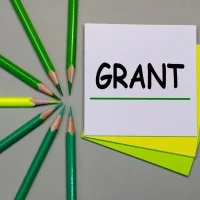In the realm of nonprofit organizations, fundraising is not merely a transactional process; it is a relationship-driven endeavor. Networking plays a pivotal role in this landscape, serving as the foundation upon which successful fundraising efforts are built. By cultivating a robust network of contacts, nonprofit professionals can tap into a wealth of resources, knowledge, and opportunities that can significantly enhance their fundraising capabilities.
The importance of networking in fundraising cannot be overstated; it is the bridge that connects organizations with potential funders, partners, and advocates who share a common vision for social change. Moreover, networking fosters a sense of community among nonprofit professionals. It allows individuals to share experiences, challenges, and successes, creating an environment where collaboration thrives.
This communal spirit not only strengthens individual organizations but also amplifies the collective impact of the nonprofit sector. By engaging in networking activities, professionals can learn from one another, gain insights into best practices, and discover innovative approaches to fundraising that they may not have considered otherwise. Ultimately, understanding the importance of networking is the first step toward building a sustainable fundraising strategy that can adapt to the ever-evolving landscape of philanthropy.
Building Relationships with Potential Funders through Networking
Building relationships with potential funders is an art that requires patience, authenticity, and strategic engagement. Networking provides a unique platform for nonprofit professionals to connect with individuals and organizations that align with their mission and values. The key to successful relationship-building lies in establishing trust and demonstrating genuine interest in the funder’s goals and priorities.
This can be achieved through meaningful conversations, active listening, and a willingness to collaborate on shared objectives. For instance, consider a nonprofit focused on environmental conservation that attends a local sustainability conference. By engaging with attendees—such as corporate sponsors, philanthropic foundations, and like-minded organizations—the nonprofit can initiate conversations about mutual interests.
By sharing their mission and listening to the funders’ perspectives on environmental issues, they can lay the groundwork for a relationship built on shared values. Over time, these interactions can evolve into partnerships that lead to funding opportunities, as funders are more likely to support organizations they know and trust.
Leveraging Networking to Gain Access to Funding Opportunities
Networking is not just about making connections; it is also about leveraging those connections to access funding opportunities that may otherwise remain hidden. Many funding opportunities are not publicly advertised; instead, they are shared within networks of trusted contacts. By actively participating in networking events and engaging with peers in the nonprofit sector, professionals can gain insights into upcoming grants, sponsorships, and other funding sources that align with their mission.
For example, a nonprofit focused on education might attend an annual gathering of educational philanthropists. During informal discussions, they may learn about a foundation planning to launch a new grant initiative aimed at supporting innovative educational programs. By being present in these networking spaces and actively engaging with others, the nonprofit can position itself to apply for funding before the opportunity becomes widely known.
This proactive approach to leveraging networking can significantly enhance an organization’s ability to secure financial support.
Utilizing Networking to Research and Identify Potential Funders
Effective fundraising begins with thorough research and identification of potential funders who align with an organization’s mission. Networking serves as a valuable tool in this research process. By connecting with other nonprofit professionals, fundraisers can gain insights into which funders are currently active in their field and what types of projects they are interested in supporting.
This information can be crucial in tailoring funding proposals to meet specific funder interests. For instance, a health-focused nonprofit might network with colleagues from similar organizations to learn about their experiences with various foundations. Through these conversations, they may discover that a particular foundation has recently shifted its focus toward mental health initiatives.
Armed with this knowledge, the nonprofit can adjust its funding strategy accordingly and approach the foundation with a proposal that aligns with its new priorities. This targeted approach not only increases the likelihood of securing funding but also demonstrates the organization’s commitment to understanding and addressing the needs of its potential funders.
The Role of Networking in Establishing Credibility with Funders
Credibility is a crucial factor in securing funding from potential donors and foundations. Networking plays an essential role in establishing this credibility by allowing nonprofit professionals to showcase their expertise, commitment, and impact within their communities. When funders see individuals actively engaged in their field—whether through attending conferences, participating in panels, or collaborating on projects—they are more likely to view them as credible partners worthy of investment.
For example, consider a nonprofit leader who regularly attends industry events and contributes to discussions on best practices in social services. Their visibility within the sector not only enhances their personal credibility but also reflects positively on their organization. Funders who recognize this leader’s commitment to excellence may be more inclined to support their initiatives, knowing that they are investing in a reputable organization led by knowledgeable individuals.
Thus, networking serves as a powerful tool for building credibility that can translate into increased funding opportunities.
Leveraging Networking to Secure Introductions to Potential Funders
The Power of Warm Introductions
One of the most effective ways to connect with potential funders is through warm introductions facilitated by existing contacts within your network. Leveraging networking relationships to secure introductions can significantly enhance your chances of making meaningful connections with decision-makers who may be interested in supporting your organization.
Why Warm Introductions Matter
A warm introduction carries more weight than a cold outreach because it comes with an endorsement from someone the funder trusts. This approach not only increases your chances of getting noticed but also allows you to enter conversations with context and credibility already established.
Leveraging Your Network
For instance, if a board member of your organization has a connection to a foundation officer, they can facilitate an introduction that positions you favorably from the outset. By actively seeking out opportunities for introductions within your network, you can expand your reach and open doors that may have otherwise remained closed.
Networking Strategies for Engaging with Potential Funders
Engaging effectively with potential funders requires thoughtful strategies that go beyond mere introductions. One effective approach is to personalize your interactions by demonstrating genuine interest in their work and aligning your mission with their philanthropic goals. This could involve researching their past funding initiatives or understanding their strategic priorities before initiating contact.
Additionally, consider hosting small gatherings or informational sessions where potential funders can learn more about your organization in an informal setting. These events provide an opportunity for meaningful dialogue and relationship-building without the pressure of formal proposals or pitches. For example, inviting potential funders to a site visit or project demonstration allows them to see firsthand the impact of your work while fostering deeper connections through shared experiences.
Maximizing the Impact of Networking in Fundraising Efforts
To maximize the impact of networking on fundraising efforts, it is essential to approach networking as an ongoing process rather than a one-time event. Consistency is key; regularly engaging with your network helps maintain relationships and keeps your organization top-of-mind for potential funders. This could involve sending follow-up emails after meetings, sharing relevant articles or updates about your organization’s progress, or simply checking in periodically.
Furthermore, consider diversifying your networking efforts by participating in various events—ranging from industry conferences to local community gatherings—to broaden your reach and connect with different types of funders. Each interaction presents an opportunity to learn something new and potentially uncover funding sources you may not have previously considered. In conclusion, networking is an indispensable tool for nonprofit professionals seeking to enhance their fundraising efforts.
By understanding its importance, building relationships with potential funders, leveraging connections for access to opportunities, conducting thorough research on funders, establishing credibility, securing introductions, employing effective engagement strategies, and maximizing ongoing interactions, organizations can create a robust fundraising strategy that drives meaningful impact in their communities. The power of networking lies not only in the connections made but also in the collaborative spirit it fosters within the nonprofit sector—ultimately leading to greater success in achieving shared goals for social change.









































